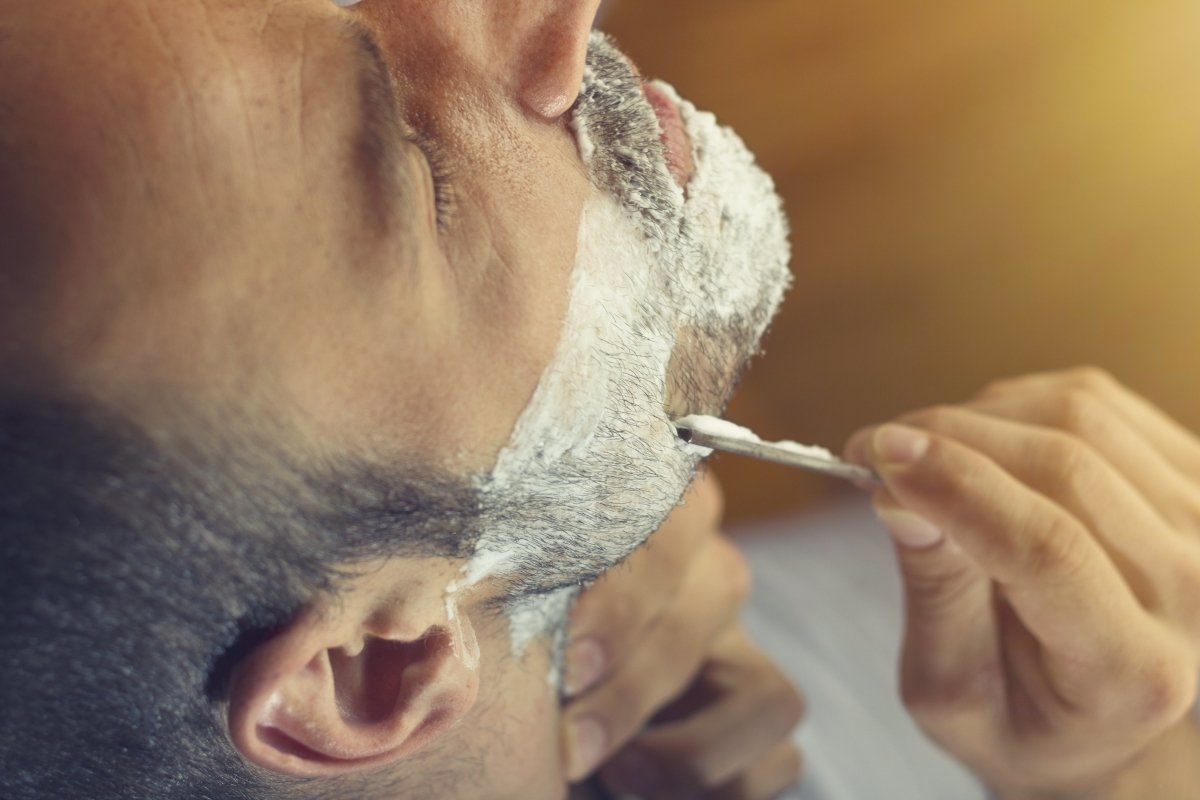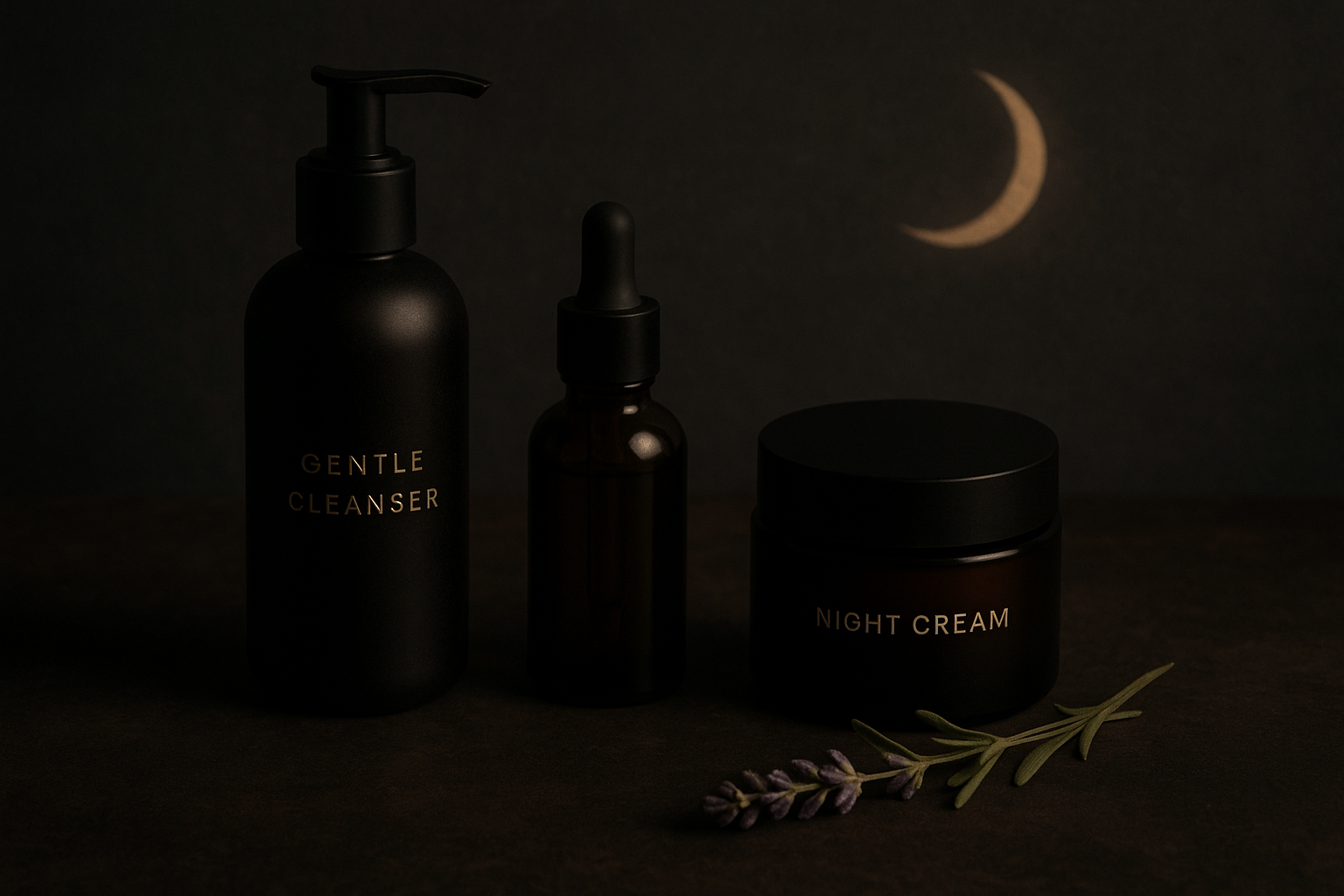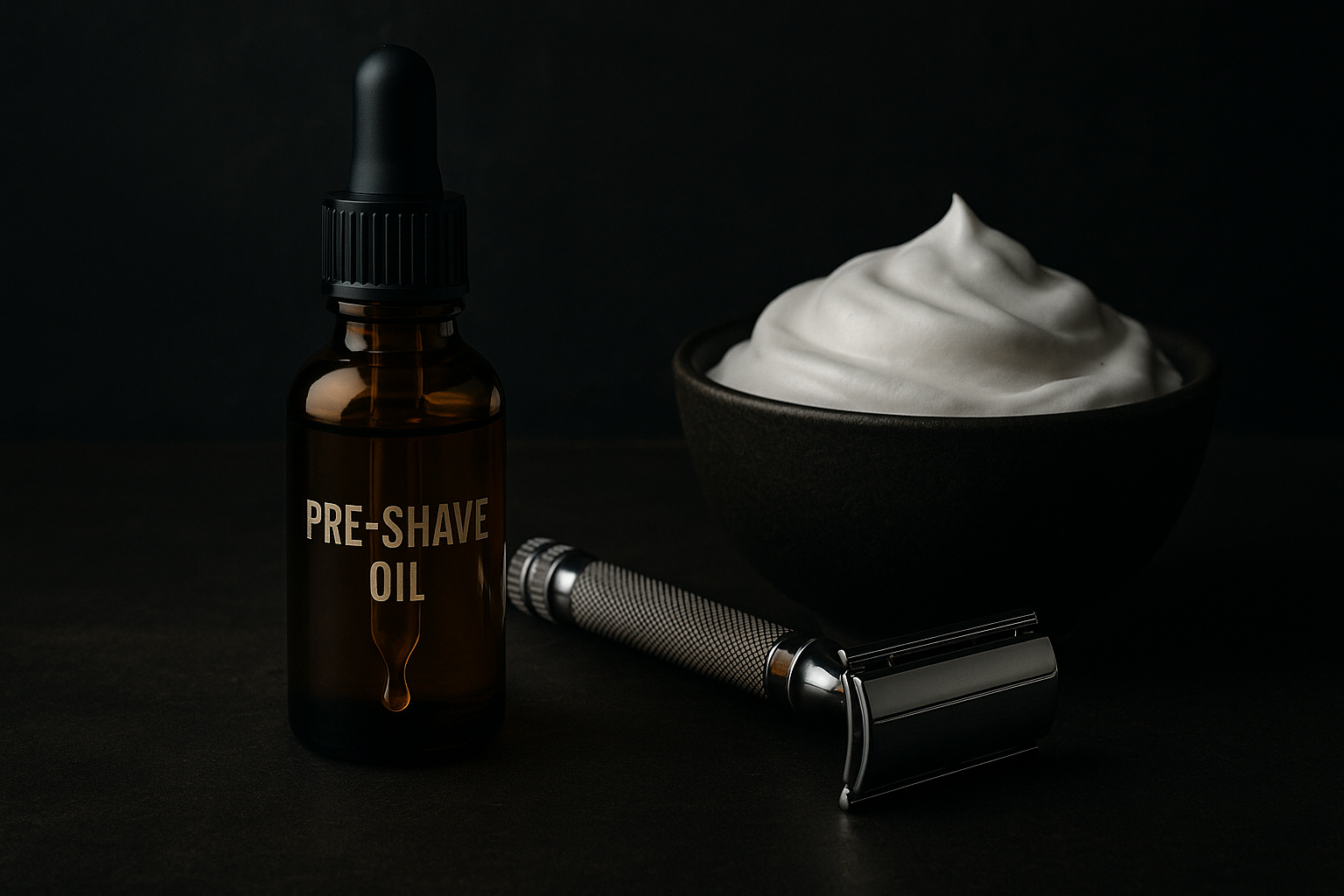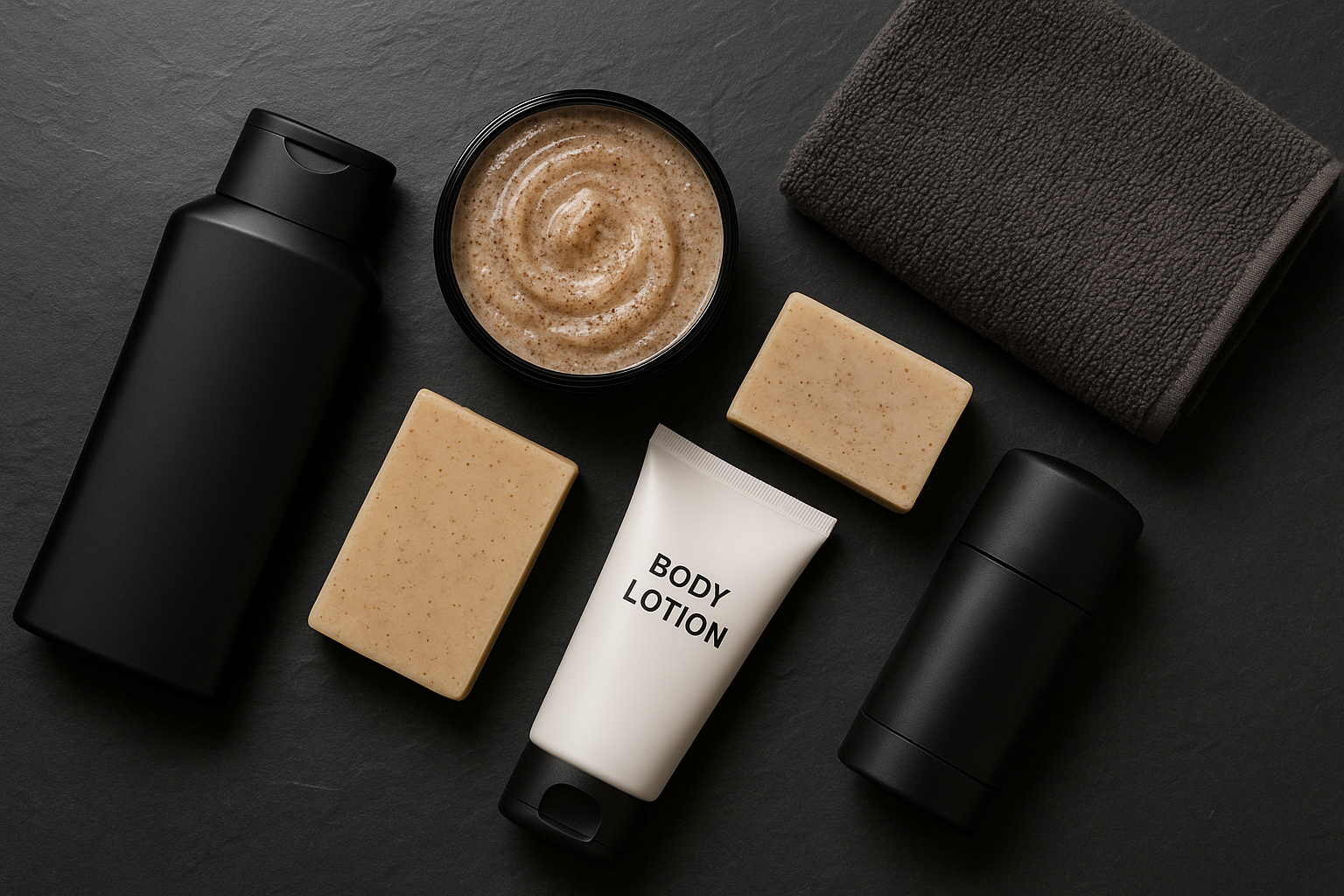For the modern gentleman, knowing how to groom one’s facial hair is just as important as choosing the right suit or tie—or deciding to flaunt convention and show up in a graphic tee and designer blazer. While there are as many different styles of facial hair as clothing options, deciding how often to shave is personal.
Some men shave every day, while others only shave once a week, and then there are those who cannot remember the last time they picked up a razor or beard trimmer. There are many factors to consider when deciding how often to shave, such as the thickness and coarseness of your facial hair, skin type, and personal preferences.
This article will explore everything from the history of shaving to the different types of facial hair. Then, we’ll focus on different facial hair styles and trends before giving guidelines on how often you should shave.
By the end, you’ll have the knowledge and confidence to make your own decisions about shaving frequency, and you’ll look all the better for it. After all, a modern gentleman like yourself is never ashamed to take pride in his appearance.
A Brief History of Shaving
The earliest evidence of men removing their facial hair dates back to the stone age. Given the name of the period, it’s no surprise that there were no fancy razors or shaving creams available to our ancient ancestors—those would come much, much later. Likewise, it may surprise you that early man used clam shells and other similar objects as pincers or tweezers. But how did that work?
Stone age men plucked their facial hair, not for esthetic purposes but to protect themselves from the accumulation of ice on their faces. That’s something that anyone who lives in a northern climate with long, harsh winters and spends ample time outdoors can probably empathize with.
We’ve also discovered cave paintings depicting bearless men dating back to 30,000 BC. The theory is these men used sharpened clam shells and other similar instruments to scrape away their facial hair. Sounds a lot like using the cheap, disposable razors of today. And their skin probably looked similar afterward, too.
Fast forward to the Bronze Age, and we start to find evidence of razors in burial sites. Unsurprisingly, these early razors were made of bronze and other metals. The shape and size of razors differed between regions just as much as the reasons for shaving. In areas like Denmark, it’s believed that cosmology and ritual played a role in shaving. In Egypt, on the other hand, it was mostly just the upper classes that shaved—likely to distinguish themselves from the commoners.
Throughout much of history, shaving was also seen as a sign of power. In ancient Greece, beards were a signifier of status and wisdom. But then, prior to fighting the Persians, the trend changed, and Alexander ordered his armies to remove their beards. According to ancient historian Plutarch, this order was given under the excuse that it would make soldiers less vulnerable to an enemy’s grasping hand. In reality, Alexander likely wanted his men to follow what he had already done: shaving his mane to better resemble the demigod Heracles. In the end, Alexander’s wish was for his men to see themselves as one, part of a mission, and more like their fearless leader.
Then, the Romans would chart a similarly interesting path of facial hair fads. In the early days of the empire, most Roman men were clean-shaven. There are even reports of affluent young men having parties celebrating their first shaves as a transition into adulthood. But as time went on, beards came back into fashion un Roman Emperor Hadrian who wanted to hide blemished skin.
Throughout the middle ages, trends— in Europe specifically — oscillated between clean-shaven and the donning of beards. It depended on who was in power and their preferences. For example, while King Henry VII of England was beardless, Henry VIII was not.
Other notable, more modern milestones in the history of shaving include:
- In 1769 The Art of Learning to Shave Oneself (La Pogonotomie) was published by the French Barber Jean-Jacques Perret. He also invented the Perret Razor, an early form of the modern safety razor, which incorporated a wooden guard to hold the blade in place and prevent deep cuts.
- The early 1800s saw the widespread use of straight steel razors. These classics required tons of maintenance, including period sharpening by a trained barber and realigning the fine blade using stropping. A razor strop (think strap) was traditionally a strip of flexible leather or similarly tough material used for straightening and polishing the blade of a razor. The technique involves holding the blade at a particular angle and drawing it along the strop in a specific pattern.
- King C. Gillette — a name many of us are familiar with — began selling disposable razor blades in 1895. Today, these are the norm and come in many forms.
- The 1900s followed with more developments, including the first electric razor created by Jacob Schick in 1928 to the first triple-blade razor — the Mach 3 by Gillette — in 1998.
The 2000s have now seen a return to more traditional methods, with many men eschewing disposables in favor of straight razors and safety razors, which provide a closer shave. In addition, barbershop culture has experienced a resurgence. As a result, men take greater pride in their appearance and the possibilities different shaving styles afford.
Thus, the story of shaving begins with necessity, progresses into ritual and custom, and finishes with trend and fashion. But that still doesn’t answer the question of how often should you shave? To answer that, you first need to learn more about the hair types on your face and the skin beneath.
Getting to Know Your Facial Hair
Many of us don’t know much about the hair that grows on our faces. Nor are we clued in about how it’s different from the hair on our head. So first, it’s good to know that facial hair naturally grows in cycles, with four phases — growth, transition, rest, and shedding.
- The growth phase, or anagen, is when your facial hair starts to grow from the root. This phase can last anywhere from two to eight years. So yes, it’s true that some of us have a limit on how long our beards can get.
- Many of us don’t let our facial hair grow out long enough to enter the next phase, the transition or catagen phase. This is when growth slows, and your hair follicles start to shrink. The transition phase lasts only about two weeks.
- Next, your hair enters the resting or telogen phase, lasting anywhere from four weeks to three months. This is when your hair follicles are inactive, and your hair is not growing.
- Finally, your hair enters the shedding or exogen phase, which is when your hair actually falls out. Shedding can last a few weeks, and during this time, near hair follicles will enter the growth phase and start the cycle anew.
However, as we mentioned, most men will never let their facial hair grow long enough to enter the shedding phase. This is because the hair on our heads grows much slower than on our faces. As a result, the average man shaves far more than he gets haircuts.
Facial hair also tends to be quite different from the hair on your head in a few ways. For one, facial hair is often coarser and thicker than head hair. This is because the follicles that produce facial hair are much larger than those that produce head hair.
And if you’ve ever wondered why your head hair is straight but your beard hair is curly or wavy, you can thank your hair follicles for that too. In straight hair, all the cells in the follicle function together as a team. This results in uniform hair development for hair strands and a round, even shape. However, in curly or wavy facial hair, how cells split and create particular proteins is asymmetrical and results in the curves of the hair.
Facial hair is also more likely to grow in different directions, making it challenging to get a close shave. In fact, the growth pattern of facial hair determines the shape of many popular beard styles, such as goatees and soul patches.
As well, facial hair often has a different texture than head hair. This is because sebaceous glands are more active on the face, causing facial hair to be oilier. As a result, a man’s facial hair requires different care than the hair on his head.
Finally, facial hair is subject to different styling choices than head hair. While there are many ways to style head hair, facial hair is generally limited to a few basic styles, such as the mustache, goatee, and full beard. However, each of these styles can be worn in several different ways, giving men a wide range of options regarding their facial hair.
Knowing all of this helps you understand how often you should shave. For example, if you want to keep your beard short or remain clean-shaven, you’ll need to trim or shave more frequently than if you’re going for a longer look. But there’s more to it than that. So let’s take a closer look at the different types of facial hair and see what maintenance they require.
Men’s Facial Hair Styles and Shaving Requirements
How much facial hair you decide to keep will determine the amount of trimming and actual shaving that will be required. Here’s a look at some of the most popular facial hair styles for men and how often you should shave for each one:
The Mustache
The mustache is one of the most popular facial hair styles for men. It can be worn in many ways, from the classic “handlebar” mustache to the more modern “colonel” mustache. While mustaches can be a great way to add personality and style to your look, they do require some maintenance.
The key to keeping a mustache looking its best is to trim it regularly. This will help keep it neat and tidy and prevent it from getting too long or unruly. Depending on the style you’re going for, you may need to trim your mustache daily or weekly.
It’s also important to wash your mustache regularly, as facial hair can collect sweat, oil, and dirt throughout the day. Again, regular washing with a beard shampoo should be sufficient. Finally, you may want to use a small amount of mustache wax to tame flyaway hairs and give your mustache a nice, polished look.
When maintaining a mustache, you’ll need to shave all other areas of your face to ensure a clean, well-groomed appearance. This means shaving your cheeks, neck, and chin on a daily or weekly basis, depending on how fast your hair grows.
The Goatee
The goatee is another popular facial hair style for men. It generally consists of a small patch of hair on the chin, with the rest of the face remaining clean-shaven. Like the mustache, the goatee can be worn in a number of different ways, from the traditional circle beard to the more modern Van Dyke beard.
Like mustaches, goatees require regular trimming to keep them looking their best. Depending on the style you’re going for, you may need to trim your goatee daily or weekly. You’ll also need to wash it regularly to remove sweat, oil, and dirt. Once or twice a week should be sufficient.
If you’re looking for a more polished look, you may want to use a small amount of beard balm or beard wax on your goatee. This will help tame flyaway hairs and give your goatee a nice, healthy shine.
To keep your goatee looking sharp, you’ll need to regularly shave the hair on the cheeks, neck, and jawline. Depending on how fast your hair grows, you may need to shave these areas anywhere from daily to weekly.
The Full Beard
The full beard is the most popular facial hair style among men and is also the easiest to care for many simply because it involves less shaving. Unlike mustaches and goatees, which require regular trimming and maintenance, beards can be left to grow wild and free. But, of course, this doesn’t mean that you can just stop shaving altogether!
While you don’t need to trim your beard as often as other facial hair styles, you should still give it a trim every week or two to keep it looking its best. You’ll also need to wash it regularly, as facial hair can collect sweat, oil, and dirt throughout the day. A good washing once or twice a week should be sufficient.
If you find that your beard is getting a bit unruly, you may want to use a small amount of beard oil to soften it, which can help it lay more uniformly. As well, beard balm and beard wax can tame flyaway hairs and give your beard a nice, healthy shine.
Depending on the length of your beard and whether you’re leaning towards grizzly or sharp edges, you may need to shave the hair on your cheeks, neck, and jawline on a regular basis. Also, depending on how fast your hair grows, you may need to shave these areas anywhere from daily to weekly.
Clean Shaven
Of course, not all men want to grow out their facial hair. If you prefer to remain clean-shaven, you’ll need to shave every day or two to keep your face looking its best.
It’s essential to use a sharp razor and make the most of a good-quality shaving cream to avoid irritation. You should also take care to shave in the direction of hair growth to prevent ingrown hairs. Though shaving against the grain may be the answer for a baby-smooth finish.
Skin in the Game
Now that you know more about the hair on your face, let’s move on to your skin — the canvas upon which your whiskers grow.
When it comes to shaving, many men’s routines are also dictated by their skin type. If you have sensitive skin, you may find that shaving more than once or twice a week is too irritating. In this case, it’s best to stick to a style that incorporates more facial hair than not. Clean-shaven might be a bit rough, but sporting a mustache, goatee, or beard will give your skin a chance to recover between shaves. Using high-quality shaving products designed for sensitive skin can also help to reduce irritation.
If you have thick, coarse hair, on the other hand, you may find that you need to shave more often to avoid an untidy appearance. Unless that’s what you’re going for. Because, let’s be honest, a nice suit with a five o’clock shadow can look pretty darn dapper.
So, how often should you shave? As we’ve learned, it depends on your facial hair style and skin type. However, most men will need to shave at least once or twice a week to maintain their look of choice.
No matter what your facial hair style of choice is, remember that the key to a well-groomed appearance is regular maintenance. And when it comes to shaving, the best way to avoid irritation is to use top-shelf products with the best tools. Let’s take a look at some of those now.
How to Achieve a Perfect Shave
A perfect shave starts with the ideal products, and here at Seven Potions, we have an assortment of high-quality men’s grooming products to choose from.
Pre-Shave Oil
There’s nothing quite like a close shave. The problem is that most of us don’t know how to achieve it outside of the barbershop. That’s where Seven Potions’ Pure Equilibrium Pre-Shave Oil comes in.
This product is designed to help men get the close shave they desire without booking an appointment at the barbershop. The oil is formulated with natural, vegan ingredients that help soften the hair and prepare it for a close shave. In addition, the oil helps lubricate the skin and reduce razor burn. As a result, men can achieve a close shave that is both comfortable and effective.
Whether you’re looking to achieve the perfect shaving routine at home or you’re simply tired of overpaying for a barber’s time, Seven Potions’ Pure Equilibrium Pre-Shave Oil is worth checking out.
Shaving Cream
Once you’ve prepared your skin for a close shave, it’s time to reach for the shaving cream. Seven Potions’ Shaving Cream offers a premium shaving experience that is not only good for your skin but also leaves you feeling fantastic.
The high-quality, plant-based ingredients work together to create a rich lather, while potent, natural anti-inflammatory ingredients help protect against redness, itchiness, and irritation caused by razor burn. In addition, our shaving cream increases hydration and moisture, leaving your skin feeling soft, smooth, and healthy. Best of all, our shaving cream is also vegan and cruelty-free.
As a result, you will enjoy a close shave with fewer nicks and cuts and less razor burn. Shaving excellence from the comfort of your own home. Yes, it’s possible.
Double Edge Safety Razor
Now that you’ve got the perfect shaving products, it’s time to discuss the perfect razor. The Double Edge Safety Razor from Seven Potions is the ideal tool for achieving a close shave while protecting your skin.
The double-edged blade provides a close shave, while the safety razor design helps to prevent nicks and cuts. In addition, the long handle offers excellent control and maneuverability. As a result, you will enjoy a close shave with fewer nicks and cuts and less razor burn.
Best of all, in addition to saving your skin, our Double Edge Safety Razor will save you money while also saving the environment. Since this system does away with the need for costly, overpriced disposable razor blades, you’ll never have to worry about running out or contributing to the growing problem of razor blade waste.
Shaving Brush
Another essential tool, the shaving brush, is designed to help create a rich lather while also exfoliating the skin. Seven Potions’ Shaving Brush is made with ultra-soft, synthetic fibers that are still firm enough to provide an effective exfoliation. The result is a close shave and softer, smoother skin.
The brush is also designed to help evenly distribute the shaving cream, which helps to prevent missed spots and uneven coverage. As a result, you will enjoy a close shave with fewer nicks and cuts and less razor burn.
Best of all, our shaving brush is also vegan and cruelty-free. So, not only will you enjoy a close shave and softer, smoother skin, but you can also feel good about using a humane and environmentally friendly product.
Post Shave Balm
Once you’ve achieved the perfect shave, following up with a product that will help soothe your skin and protect it from the elements is essential. That’s where our Post Shave Balm comes in.
This product is designed to nourish and hydrate your skin while protecting it from wind, sun, and pollution. The light, non-greasy formula is quickly absorbed, leaving your skin feeling soft, smooth, and healthy. In addition, our aftershave balm contains natural ingredients that help to reduce inflammation and redness caused by razor burn, making it a grooming essential that you won’t be able to live without.
Final Shaving Takeaways
We’ve covered a lot here trying to answer your question — how often should I shave?
As a general rule of thumb, we recommend shaving every other day. However, this may vary depending on your facial hair growth, skin type, and personal preference.
The most important thing is to find a shaving routine that works for you and that it’s one your skin agrees with. Once you’ve found the perfect products and the perfect razor, half the battle is won. The rest is up to you.
We hope you enjoyed this article and that you now have a better understanding of how often you should shave. If you have any questions or comments, please feel free to reach out to us. We’re always happy to help recommend the best products and routines for your individual needs.
Main image: bigstock



